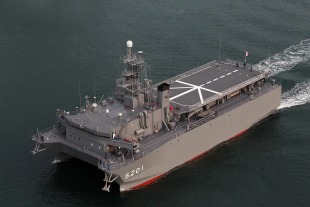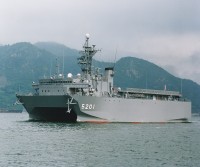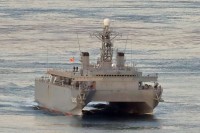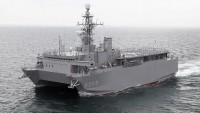Hibiki-class ocean surveillance ship
Basic information
Ship measurements
Machine
- 4 * Mitsubishi S6U-MPTK diesel engines
- 2 * shafts
Personnel
Combat assets
- OPS-16
- OPS-9
- Sonar AN / UQQ-2
The Hibiki-class ocean surveillance ship is a class of surveillance ships operated by the Japan Maritime Self-Defense Force. The ships have a small-waterplane-area twin hull (SWATH) design.
The Hibiki class was developed in response to the launch of the Kilo-class submarines by the Soviet Union, and their deployments in the waters near Japan. The Defense Agency announced plans to develop a surveillance ship in 1989.
The first Hibiki-class vessel was commissioned on January 23, 1991.
All three vessels of the class have been built by Mitsui Engineering & Shipbuilding at its Tamano shipyard.
The United States and Japan reportedly split the costs of operating the Hibiki vessels, which approximately US$20 million per year.
Hibiki-class vessels have a beam of 30 metres (98 ft 5 in), a top speed of 11 knots (20 km/h; 13 mph), and a standard range of 3,800 nautical miles (7,000 km; 4,400 mi). Each vessel has a crew of 40, including five American civilian technicians, and a flight deck for helicopters to operate off of. They are able to deploy on station for 90 days.
The vessels have an AN/UQQ-2 Surveillance Towed Array Sensor System (SURTASS), which is installed in the United States. Data from the sensors is relayed through the Defense Satellite Communications System, and processed and shared with the United States. The data is fed into the Integrated Undersea Surveillance System.
Ships3
- Comments
 en
en ru
ru uk
uk


 Japan Maritime Self-Defense Force
Japan Maritime Self-Defense Force Mitsui Engineering & Shipbuilding
Mitsui Engineering & Shipbuilding

